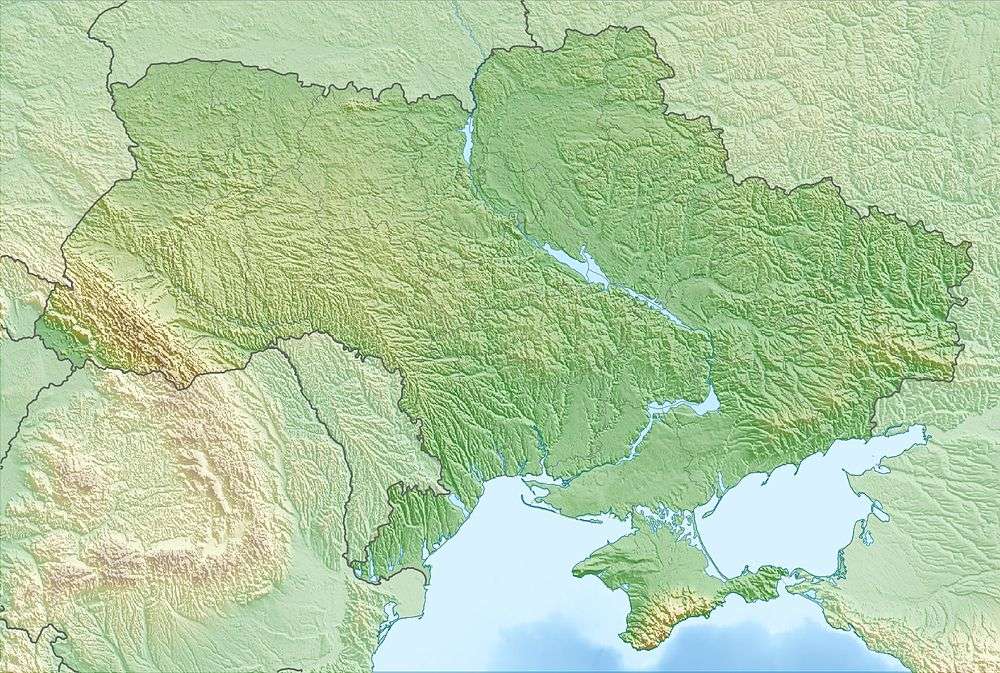Holosiivskyi National Nature Park
| Holosiivskyi National Nature Park | |
|---|---|
|
Ukrainian: Націона́льний приро́дний парк «Голосі́ївський» (Also: Goloseevs'kiy) | |
|
IUCN category III (natural monument or feature) | |
|
Holosiivsky Park | |
 Location of Reserve | |
| Location | Ukraine |
| Nearest city | Kiev |
| Coordinates | 50°17′50″N 30°33′37″E / 50.29722°N 30.56028°ECoordinates: 50°17′50″N 30°33′37″E / 50.29722°N 30.56028°E |
| Area | 1,879 hectares (7 sq mi) |
The Holosiivskyi National Nature Park Ukrainian: Націона́льний приро́дний парк «Голосі́ївський» is a protected remnant of forest surrounded by the urban area of the city of Kiev, Ukraine. It is located on the Kiev hills, in the Dniester-Dnieper forest-steppe province, North-Dnieper lowland and steppe zone of Left-Bank Dnieper province, in Holosiivskyi District. Its total area is 4525.52 hectares, of which 1879.43 hectares are in permanent use. It is managed by the Ministry of Ecology and Natural Resources of Ukraine.[1]
A variety of landscapes, significant biodiversity, lakes and wetlands, plus historical, cultural and ethnographic monuments define a high importance of the park’s area for scientific research, monitoring of ecosystems and conservation, as well as use by locals of ecological trails.
Topography
The park consists of several spatially disconnected forests located in the southern part of the city of Kiev The park area belongs to the forest-steppe zone, with its main area covered by forest - 4232.8 hectares (more than 90% of the territory). Wetlands make up 66.2 ha, and the remaining 45.9 ha is water.[2]
Flora and fauna
The flora of the park includes 650 species of vascular plants, 118 species of moss, and more than 60 species of fungi. Some of these species have conservation status of international, national or regional level. Among the vascular plants that grow in the park, 5 species are listed in Annex I of the Berne Convention on the Conservation of European Wildlife and Natural Habitats, 1 species in the European Regional Red List, 24 species in the Red Book of Ukraine, and 29 species are regionally rare.
The Fauna consists of 31 species of terrestrial molluscs, 190 species of insects, and 181 species of vertebrates (21 species of bony fish, 10 species of amphibians, 6 species of reptiles, 100 species of birds, and 44 mammal species). The park is represented by a number of vertebrate and invertebrate animals that are protected internationally, nationally, and regionally:
- 9 species are in the IUCN Red List (4 vertebrates and 5 invertebrates);
- 93 species are in Annex II of the Berne Convention (89 and 4, respectively);
- 11 species are listed in the Washington Convention;
- 46 species are in the Bonn Convention (EUROBATS agreement - 10 species, AEWA - 11 species);
- 13 species are within the European Red List (4 and 9, respectively);
- 2 species belong to the European Red List of Butterflies;
- 35 species are in the Red Book of Ukraine (20 vertebrates and 15 invertebrates);
- 11 vertebrate species are in the list of species that are protected within Kiev.[2]
Among National Red Book species of vertebrates in the park, there are: European green lizard, smooth snake, short-toed snake eagle, greater spotted eagle, stock dove, white-backed woodpecker, Miller's water shrew, serotine bat, Nathusius' pipistrelle, Kuhl's pipistrelle, common pipistrelle, soprano pipistrelle, common noctule, Leisler's bat, brown long-eared bat, rearmouse, Daubenton's bat, stoat, European polecat and otter. Among National Red Book species of invertebrates, there are: forest caterpillar hunter, stag beetle, musk beetle, hermit beetle, Neopristilophus depressus (lat.), swallowtail, southern festoon, clouded Apollo, Duke of Burgundy, poplar admiral, blue underwing, Janus femoratus(lat.), Megarhyssa superba(lat.), carpenter bee and mammoth wasp.
The park has numerous age-old oaks (oak of Peter Mohyla, oaks of glory, etc.), primroses and colorful cascades of the ponds named Nutwoods, Kitaevsky and Didorivsky. Source of the holy bathing house located in Didorivsky watercourse near the "Mit'kin pound" in Holosiivskyi forest., a bath called by religious people in the area healing or miraculous. Another bath – Kitaevsky is near watercourse Kitaevsky.
History
A picturesque and cozy place that was called Goloseev or Holosievo was mentioned from the beginning of the 16th century. The origin of the name usually is connect with planting trees on the treeless territory in the early 17th century by the order of the founder Goloseevskiy skit Peter Mohyla. However, there are more ancient references to forested land and the farm Hulasiyivskyy. Thus, it is likely that local name is derived from the phrase “siyaty hul”("to sow hum , but not “golosiyaty” (“to plant treeless land”.)
Attractions
The main historical and cultural attractions are located in the national park and close to it are: - Holy Trinity Monastery (Kitaevskaya desert with ancient caves), 18th and 20th centuries; - Holy Protection Monastery (Deserts Holosiivska), founded in the 17th century, rebuilt in the late 20th and early 21st centuries; - Main Astronomical Observatory of National Academy of Sciences of Ukraine, where part of the buildings were built in 1841-1845, respectively; - Complex of buildings of Agricultural Academy (now the National University of Life and Environmental Sciences), built in 1925-1931. - A fragment of the Kiev fortified area (KyUR), huge fortification with length of 85 km, which was built during 1929-1935. Fortified area covered Kyiv semicircles leaning its flanks on the Dnipro River. In the Southpart of the bunkers was inscribed in the remains of the ancient "Serpent shaft." The depth of the defensive zone isup to 5 km. Altogether 217 Pillboxes were built; 7 of them are situated in national parks.
Gallery
References
- ↑ "National Natural Park "Goloseevsky"". MENRU - Order 04.08.2014 N 244. Ministry of Ecology and Natural Resources. Retrieved 29 June 2016.
- 1 2 "Holosyiyiskyy NPP". Official Website of Nature Park. HOLOSYIYIVSKYY NPP. Retrieved 29 June 2016.
External links
- Map of Holoseevski at OpenStreetmap.org
- Litopys Pryrody (Літопис природи), 2011, National Nature Park "Holosiivskyi", official annual report submitted to the Ministry of Ecology and Natural Resources of Ukraine.
- http://www.recreation.ecotour.com.ua/eco-route/189-2012-03-16-15-25-38
- http://www.reserves.in.ua/npp/golosijvskyj
- http://ukrainaincognita.com/shaparnya/natsionalnyi-pryrodnyi-park-golosiivskyi

